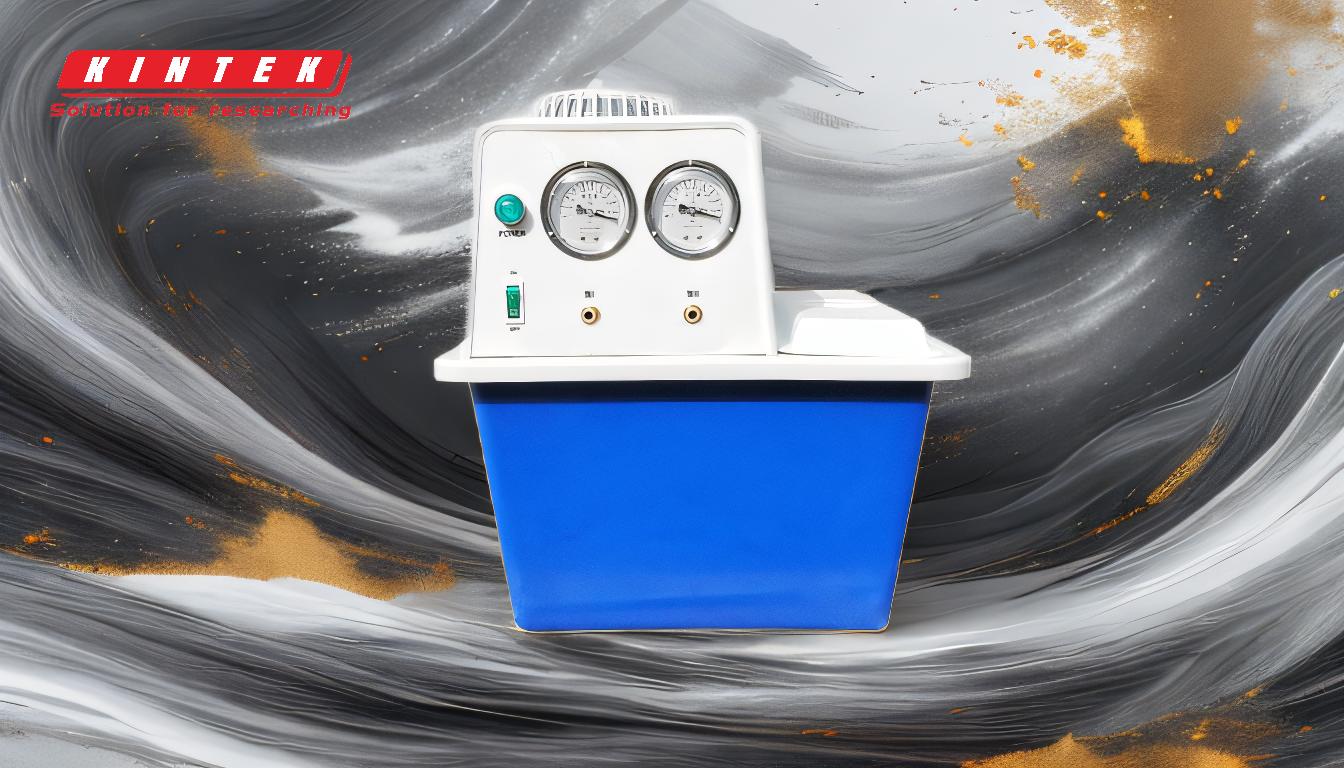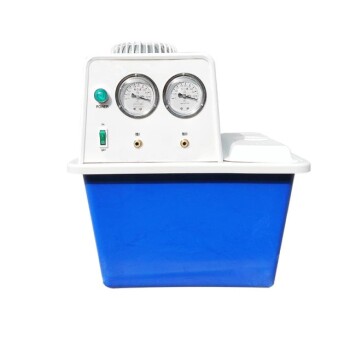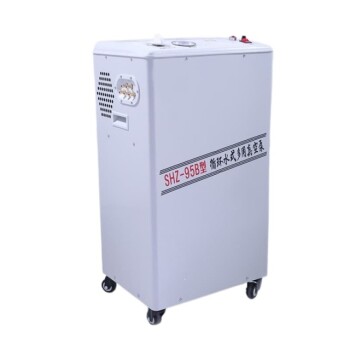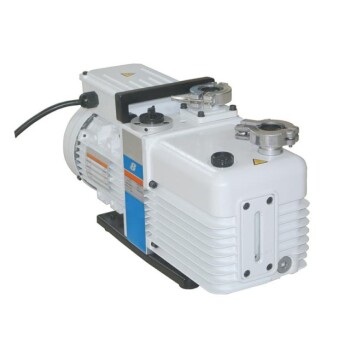The most common type of vacuum pump is the rotary vane vacuum pump, widely used across various industries and laboratory settings due to its versatility, reliability, and ability to achieve strong, consistent vacuum pressures. Rotary vane pumps are oil-sealed and excel in applications requiring medium to high vacuum levels, such as freeze drying, rotary evaporation, and mass spectrometry. They are also robust and relatively affordable, making them a popular choice for both industrial and laboratory environments. Other types of vacuum pumps, such as diaphragm pumps, scroll pumps, and liquid ring pumps, are also common but are typically chosen for specific applications based on their unique capabilities.
Key Points Explained:

-
Rotary Vane Vacuum Pumps Are the Most Common
- Rotary vane vacuum pumps are widely regarded as the most common type of vacuum pump due to their versatility and reliability.
- They are oil-sealed, which allows them to achieve strong and consistent vacuum pressures, often below 10^-3 mbar.
- These pumps are suitable for a wide range of applications, including freeze drying, rotary evaporation, and mass spectrometry, making them a go-to choice in both industrial and laboratory settings.
-
Why Rotary Vane Pumps Are Preferred
- Robustness: Rotary vane pumps are known for their durability and ability to handle demanding applications.
- Affordability: They are relatively cost-effective compared to other types of vacuum pumps, such as turbomolecular or scroll pumps.
- Versatility: They can operate in a wide range of vacuum levels, from medium to high vacuum, making them suitable for diverse tasks.
-
Comparison with Other Common Vacuum Pump Types
- Diaphragm Vacuum Pumps: These are oil-free and chemically resistant, making them ideal for applications involving aggressive solvents, such as solid phase extraction. However, they are generally less powerful than rotary vane pumps.
- Scroll Vacuum Pumps: These are also oil-free and are often used in cleanroom environments or for applications requiring low to medium vacuum. They are quieter and require less maintenance but are typically more expensive.
- Liquid Ring Vacuum Pumps: These are used for applications involving wet or corrosive gases but are less common in laboratory settings due to their complexity and higher maintenance requirements.
- Turbomolecular Vacuum Pumps: These are used for achieving ultra-high vacuum levels but are significantly more expensive and specialized, limiting their widespread use.
-
Applications of Rotary Vane Vacuum Pumps
- Laboratory Use: Commonly used in freeze dryers, rotary evaporators, and mass spectrometers due to their ability to maintain consistent vacuum pressures.
- Industrial Use: Found in hydraulic brake systems, packaging machines, and other applications requiring strong vacuum.
- General Use: Suitable for tasks requiring medium to high vacuum levels, such as degassing, distillation, and filtration.
-
Factors Influencing the Choice of Vacuum Pump
- Vacuum Level Required: Rotary vane pumps are ideal for medium to high vacuum, while other pumps like diaphragm or scroll pumps are better suited for low to medium vacuum.
- Chemical Resistance: Diaphragm pumps are preferred for handling aggressive solvents, whereas rotary vane pumps are better for general-purpose applications.
- Budget and Maintenance: Rotary vane pumps offer a balance of affordability and robustness, making them a practical choice for many users.
-
Advantages and Limitations of Rotary Vane Pumps
-
Advantages:
- Strong and consistent vacuum performance.
- Suitable for a wide range of applications.
- Relatively low cost and easy to maintain.
-
Limitations:
- Require regular oil changes and maintenance due to their oil-sealed design.
- Not suitable for oil-free or cleanroom environments.
- Can be noisy compared to scroll or diaphragm pumps.
-
Advantages:
-
Conclusion
- Rotary vane vacuum pumps are the most common type due to their versatility, reliability, and cost-effectiveness. While other pumps like diaphragm, scroll, and turbomolecular pumps have their own advantages, rotary vane pumps remain the preferred choice for many applications requiring medium to high vacuum levels. Their widespread use in both industrial and laboratory settings underscores their importance as a fundamental tool in vacuum technology.
Summary Table:
| Feature | Rotary Vane Pumps | Other Pump Types |
|---|---|---|
| Vacuum Level | Medium to high vacuum (below 10^-3 mbar) | Low to medium vacuum (diaphragm, scroll) or ultra-high vacuum (turbomolecular) |
| Oil-Sealed | Yes | No (diaphragm, scroll) |
| Applications | Freeze drying, rotary evaporation, mass spectrometry, degassing, distillation | Cleanroom environments, handling aggressive solvents, wet/corrosive gases |
| Cost | Affordable | Higher cost (scroll, turbomolecular) |
| Maintenance | Regular oil changes required | Low maintenance (scroll, diaphragm) |
| Noise Level | Moderate to high | Quiet (scroll, diaphragm) |
Looking for the right vacuum pump for your needs? Contact us today to find the perfect solution!








